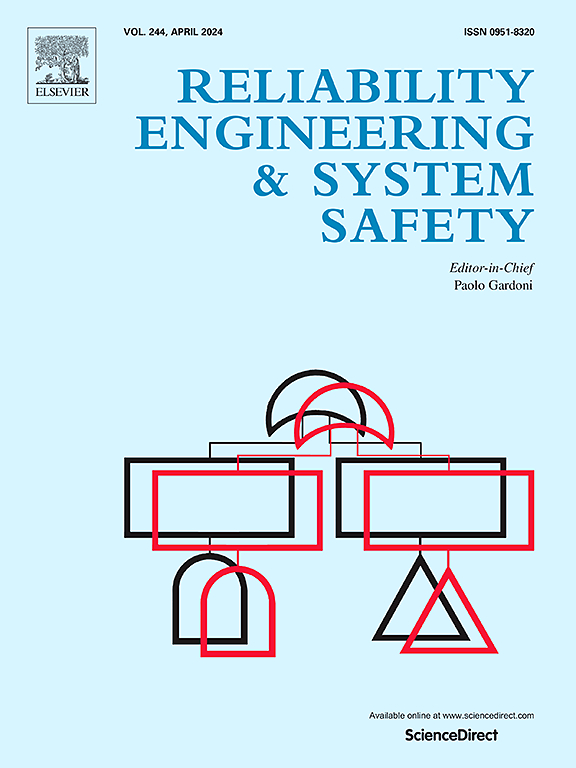A new multiple stochastic Kriging model for active learning surrogate-assisted reliability analysis
IF 9.4
1区 工程技术
Q1 ENGINEERING, INDUSTRIAL
引用次数: 0
Abstract
The Kriging model-assisted reliability analysis method is widely recognized as an effective way to evaluate structural failure probability. However, accurately estimating failure probability is challenging due to the inherent limitations of the Kriging model in accounting for response noise during the modeling process. This limitation undermines the accuracy of emulation in reliability analysis, significantly reducing the confidence of the reliability evaluation. To overcome this challenge, this paper proposes an active learning Lasso-based multiple stochastic Kriging model-Monte Carlo simulation method. First, a Voronoi-based adaptive proximity-guided sampling strategy is presented to sample important MCS points near the limit state surface by continuously identifying sensitive Voronoi cells. These identified MCS points are then used to select the stochastic Kriging model components, thereby ensuring that the selection process prioritizes the most informative regions. Second, a Lasso-based model selection strategy is proposed to account for the model-form uncertainty in the multiple stochastic Kriging modeling process, which optimizes and selects the best ensemble of multiple stochastic Kriging model components for the framework of the surrogate ensemble-assisted reliability analysis method. The effectiveness of the proposed method is demonstrated through numerical and engineering case studies. Results show that the proposed method provides more accurate failure probability estimation with fewer calls to limit state functions compared to existing methods, improving predictive accuracy and computational efficiency in structural reliability analysis.
求助全文
约1分钟内获得全文
求助全文
来源期刊

Reliability Engineering & System Safety
管理科学-工程:工业
CiteScore
15.20
自引率
39.50%
发文量
621
审稿时长
67 days
期刊介绍:
Elsevier publishes Reliability Engineering & System Safety in association with the European Safety and Reliability Association and the Safety Engineering and Risk Analysis Division. The international journal is devoted to developing and applying methods to enhance the safety and reliability of complex technological systems, like nuclear power plants, chemical plants, hazardous waste facilities, space systems, offshore and maritime systems, transportation systems, constructed infrastructure, and manufacturing plants. The journal normally publishes only articles that involve the analysis of substantive problems related to the reliability of complex systems or present techniques and/or theoretical results that have a discernable relationship to the solution of such problems. An important aim is to balance academic material and practical applications.
 求助内容:
求助内容: 应助结果提醒方式:
应助结果提醒方式:


